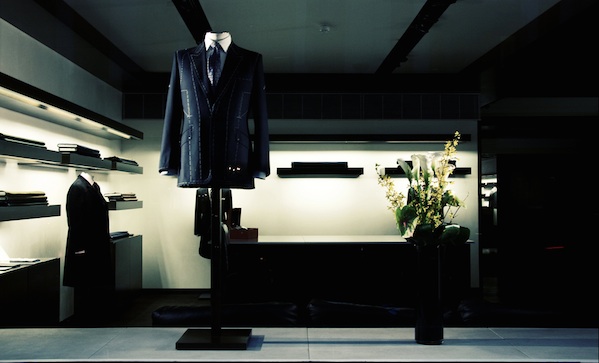The world is littered with style advice for modern men.
And that’s the problem, isn’t it?
Every month, Esquire, GQ, Details, and god forbid—Maxim—clutter the world with more advice for you and I to devour and dismiss. Sure, you could cut out each month’s advice column and post it on your inspiration board. Or you can clip the file to an online notebook, tag the advice with relevant keywords and stuff it in a folder labelled Style Advice.
The problem with that approach is that digital advice and magazines seem flimsy. Something about a book, especially a hardcover, trumps a Tweet, a magazine you trash at month’s end or a blog (I know, this is an odd place to make that statement). If something’s in a book, it feels timeless and classic and that’s what you want with men’s style.
With that in mind, I’ve curated a list of 5 men’s style guides, call them roadmaps to a better you. And as a bonus they fill out a bookshelf real nice.
Details Men’s Style Manual, Daniel Peres (and the editors of Details magazine)
Daniel Peres, editor of Details magazine and author of this book, feels your pain. In 2004, a reporter with The New York Times impaled his sense of style on the following sentence: “Daniel Peres is a slob, and that is meant in the nicest possible way.” Peres uses the book’s intro to share how he rebuilt his style like the Six Million Dollar Man or Robocop and that’s enough to give each of us hope. The Details crew recognizes that photos rule and use images to highlight style dos and don’ts. That’s where this book excels. The writing is accessible and the guide features advice from style icons Giorgio Armani, Michael Kors, Sean Combs and Tommy Hilfiger. Puff Daddy, really?
Sample advice: “When you’re in the dressing room, be sure to check out your ass in the mirror. Too saggy is no good.”
Context: shopping for jeans.
How To Be A Man: A Guide To Style & Behavior For The Modern Gentleman, Glenn O’Brien
O’Brien writes The Style Guy column for GQ. Not once have I read his advice and said I can apply that to my life. But if you toss and turn each night while pondering whether to mix and match athletic brands when you work out, or refer to your style problems as “sartorial conundrums,” this is your guide. Take note. This is an all around style and etiquette guide — with more emphasis on the etiquette — for modern men, or as O’Brien says, the real dandys like Charles Baudelaire or André 3000.
Sample advice: “Or maybe bow-phobia stemmed from a subconscious fear of natty, neat, and determined Black Muslims, as personified by Malcolm X.
Context: explaining the rise and fall in popularity of bow ties.
The Perfectly Dressed Gentleman, Robert O’Byrne
It comes with a bookmark shaped like a bowtie. That’s the only nice thing I have to say about this book, which I grazed in Chapter’s one recent afternoon. Bland is a generous way of describing the copy, which failed to ignite in me any desire to improve my style. But perhaps that’s just me. This book shares all the basics, but it’s boring.
Sample advice: “Leather tends to look better in a formal or professional environment, while suede is more suited to casual times.”
Context: does it matter?
The Handbook of Style: A Man’s Guide To Looking Good, Esquire
Of all the books I’ve mentioned, this is the only one occupying space on my bookshelf. The advice skews towards the kind of man who wears suits several times a week, but they’ve tucked — between the covers — a proper education on everything from shirts to trousers and building a working wardrobe. Plenty of photos, illustrations and style icons worth idolizing, including Marlon Brando, Steve McQueen and more.
Sample advice: The injustice in the 2005 NBA dress code is that it did not ban five-button suits.
Context: The secret code of buttons.
The Gentleman’s Art of Dressing, with Economy
This one had me at economy but not because I’m cheap. First published in the 1870s, the part about this book that’s so fascinating is a simple premise: we’d all do well to learn that a great wardrobe isn’t about owning the most items of clothing. It’s about purchasing high quality items that can withstand repairs and the fickle beast they call fashion.
Sample advice: “For a blind person to buy an expensive painting for his own use would be a perversion of economy.”
Context: Dressing with economy doesn’t mean buying things cheap.
____________
Pierre Hamilton is a freelance writer from Toronto, where some of his best friends describe him as an acquired taste. He enjoys bourbon and scotch, but craves craft beer, overproof Jamaican rum and great non-fiction. He has a very limited style knowledge but knows what he likes. He also produces a monthly music podcast called Sound Considerations. Follow him, but not too closely, on Twitter.
___
Photo courtesy of MadHatterr.


